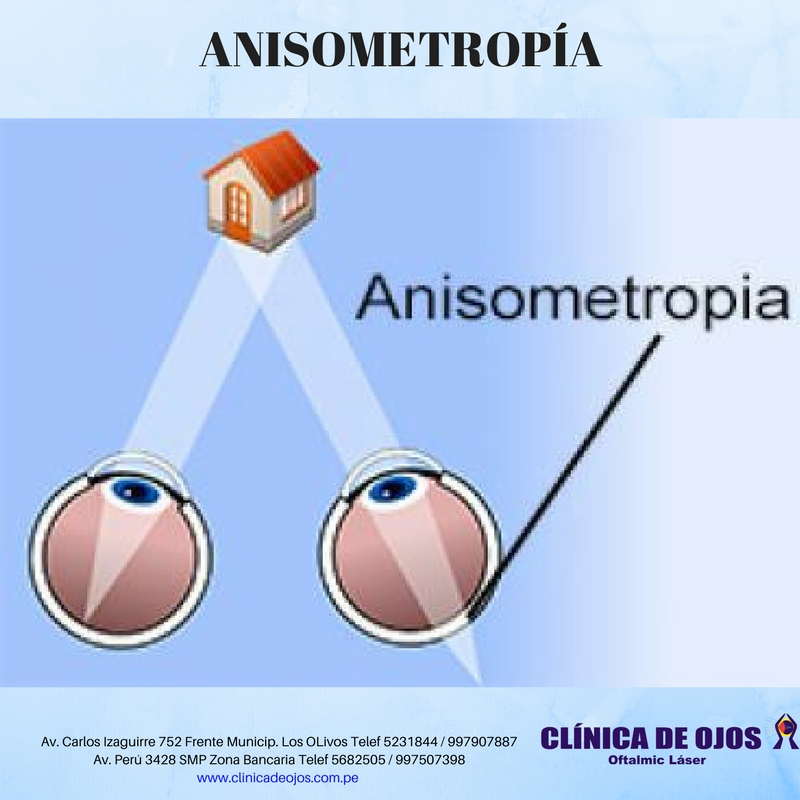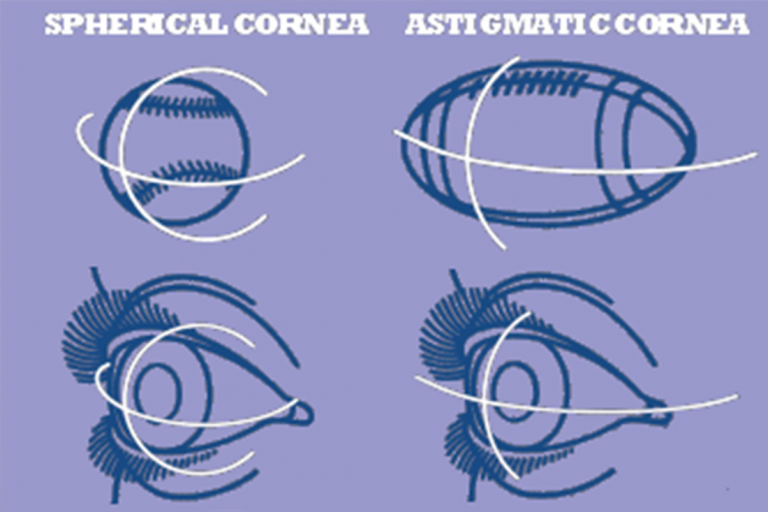A myope or not? Pseudomyopia, antimetropia and more Myopia Profile

Conditions A Vision Expert
Another name is antimetropia. Simple astigmatic anisometropia. This type of anisometropia also involves astigmatism. This type of vision problem results from your eye shape. The shape of your eye is like that of a football or the back of a spoon. The shape causes light to refract unevenly. Refraction means that light changes direction when it.

Can you be nearsighted in one eye and farsighted in the other? Eye care health, Eyes, Eye care
Antimetropia, a sub-classification of anisometropia, is a rare refractive condition in which one eye is myopic and the fellow eye is hyperopic. This case report describes the ocular characteristics and atypical refractive progression in an adult male with a moderate degree of non-amblyopic antimetropia over a 20-year period.

Progressive adult antimetropia Vincent 2014 Clinical and Experimental Optometry Wiley
Antimetropia (an-TIH-meh-TROW-pea-uh) is a relatively rare type of anisometropia. In antimetropia, one eye is nearsighted and the other eye is farsighted. Antimetropia poses significant risk of amblyopia and strabismus. It is treated the same as other forms of anisometropia.

Anisometropia Isometropia Antimetropia Simple Compound Mixed anisometropia treatment
In children aged 3, 4, 5, and 6 years, the mean anisometropia was higher in children with myopia and antimetropia than in those with hyperopia (P = 0.005, 0.002, 0.001, and 0.011, respectively). The differences were not significant in children aged > 6 years (all P > 0.05). The factors associated with changes in anisometropia were age.

Solusi MATA MINUS TINGGI sebelah dan ukuran mata beda tanda Anisometropia dan Antimetropia
A person can be farsighted and nearsighted. This typically manifests as a condition known as anisometropia, when one eye's focus is different from that of the other eye. It can mean their vision.

Refractive Error Summit Eye Surgeons
Guide to Anisometropia (& Treatment Options) Anisometropia is a condition where there's unequal refraction between a person's eyes, leading to symptoms like visual blurring and double vision. Two main types, relative and absolute anisometropia, can affect individuals differently. Anisometropia treatment, ranging from corrective lenses to.

I have antimetropia. One eye is really nearsighted and one is really farsighted. Just learned
Aniseikonia is the difference in image size perceived between the eyes from unequal magnification. The two most common causes are anisometropia and retinal pathology. Symptoms of aniseikonia include diplopia, headache, dizziness, disorientation, and excessive eye strain.

Antimetropía YouTube
Antimetropia is a rare sub-type of anisometropia in which one eye is myopic (nearsighted) and the other eye is hyperopic (farsighted). This condition occurs in about 0.1% of the population. Causes. Anisometropia is caused by common refractive errors, such as astigmatism, far-sightedness, and myopia, in one eye..

Anisometropia and antimetropia , pupil size and blur circles(emmetrope part 5) YouTube
Abstract. Antimetropia, a sub-classification of anisometropia, is a rare refractive condition in which one eye is myopic and the fellow eye is hyperopic. This case report describes the ocular characteristics and atypical refractive progression in an adult male with a moderate degree of non-amblyopic antimetropia over a 20-year period.

Danny Bracken Artist and Musician
In children aged 3, 4, 5, and 6 years, the mean anisometropia was higher in children with myopia and antimetropia than in those with hyperopia (P = 0.005, 0.002, 0.001, and 0.011, respectively).

Danny Bracken Artist and Musician
Anisometropia adalah suatu keadaan dimana terjadi kelainan refraksi kedua mata yang berbeda. Anisometropia kedua mata terdapat perbedaan refraksi. Anisometropia dapat terdiri dari mata minus (miopia), hipermetropia, dan astigmatisme. Anisometropia dapat menyebabkan mata malas ( ambliopia). Gejala yang ditimbulkan ansiometropia berbeda beda.

Clínica de Ojos Oftalmic Láser ANISOMETROPIA
Anisometropia is a condition of refractive interocular asymmetry and is usually referred only to as the clinically significant differences between the right and the left eye. According to studies conducted in different regions, the incidence of this common refractive abnormality ranges from 3.79% to 21.8%.[1][2][3][4]

(PDF) Antimetropia in a 10yearold boy with unilateral tilted disc syndrome
Antimetropia, a sub-classification of anisometropia, is a rare refractive condition in which one eye is myopic and the fellow eye is hyperopic. This case report describes the ocular characteristics and atypical refractive progression in an adult male with a moderate degree of non-amblyopic antimetropia over a 20-year period. The potential.

Danny Bracken Artist and Musician
This article was written or reviewed by an All About Vision expert contributor, a partner medical reviewer or a member of our medical advisory board.

A myope or not? Pseudomyopia, antimetropia and more Myopia Profile
Antimetropia is a rare type of anisometropia in which one eye is myopic and the fellow is hyperopic, This optical condition condition permits the evaluation of both sides of the emmetropisation process failure in the same individual by minimising genetic and environmental factors.

Conditions A Vision Expert
Antimetropia is the medical term used specifically for myopia in one eye and hyperopia in the other. However, many eye doctors use the term mixed anisometropia for this condition. Anisometropia symptoms. Anisometropia usually impacts the ability of the two eyes to work together. People with uncorrected anisometropia often have reduced vision in.